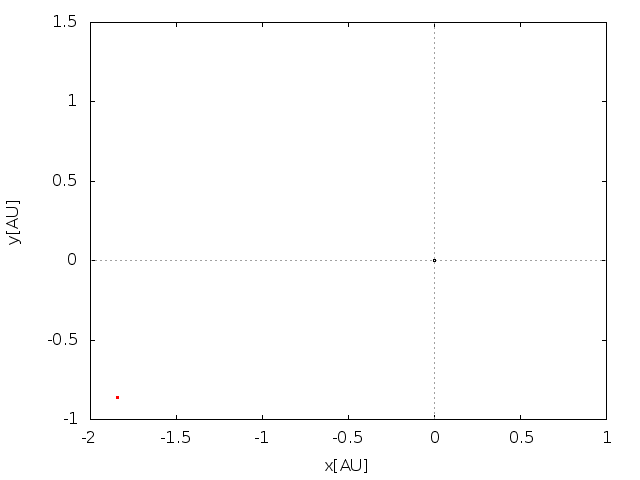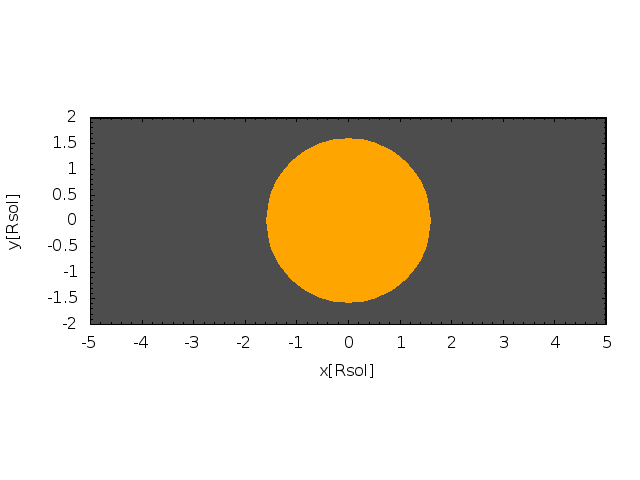This star (KIC8462 or Boyajian's star) became famous after Boyajian et al. (2016) discovered its variability in the data obtained by the Kepler satellite. It is a normal 12 magnitude main sequence F3V/IV star with mass of about M_{\star} = 1.43 M_{\odot}, radius R_{\star} = 1.58 R_{\odot}, effective temperature T_{\rm eff}=6750 K, and luminosity L_{\star} = 4.7 L_{\odot}. It exhibits irregular asymmetric dips in the brightness with a tendency towards a smooth long ingress and sharp egress. Dips may eat up more than 20\% of the flux and do not show any obvious periodicity. See the four pictures below.




There is no simple explanation of such behavior. Consequently, a last resort explanation was offered by Wright et al. (2016) that this kind of variability might be consistent with a swarm of artificial mega-structures produced by an extraterrestrial civilization. This attracted attention of public media all over the world.
So far the most elaborated model which enables a direct comparison with the observations is a 'comet' scenario of Bodman & Quillen (2016). They investigated the possibility that the dips are caused by a swarm of comets transiting the star. It was possible to fit most of the features in the Kepler light-curve with several clusters of comets containing 70 - 700 comets. However, it was not possible to reproduce a large dip at the day 800 because of its smooth shape with gradual ingress followed by a sharp egress. Comets would tend to produce just the opposite trend with a sharp ingress and a shallower egress. There are other problems with this scenario also. For example, such a high number of objects means a large number of free parameters which might be used to fit almost any lightcurve.
We are offering another possible explanation of such behavior: There are a few (four or more) massive objects on similar and highly eccentric orbits around the star. By the massive object (MO) we mean any object whose gravity cannot be neglected, which then allows to form and support a ring or another structure around it. This is contrary to a comet whose gravity is usually regarded as negligible. Each MO is surrounded by a dust cloud. The cloud consists of numerous mass-less dust particles. It is this dust cloud which causes the attenuation of the star as it transits in front of it. We assume a simple initial model of the cloud at a certain distance from the star. Then we let it evolve (integrate numerically position of each dust particle) under the influence of gravity and radiation (or a stellar wind) pressure. Then we calculate the light curves as the dust grains transit the star. For certain initial parameters of the cloud the light curves are very similar to the observations. The fits can certainly be improved but one cannot expect a perfect fit from such simple models with only a handful of free parameters. Simulation of one of the features is shown below. More details can be found in a paper Neslusan & Budaj (2017)

Above is the simulation of a dust cloud and its parent body that might be responsible for the feature at BKJD 1540. It is a pole-on view with the star at the center. The parent body is on a highly eccentric orbit around the star. It is surrounded by a ring like dust cloud (initially). The ring is not seen at the beginning since it is very close to the body. Later on it spreads and decouples near the periastron while the body continues to move on the eccentric orbit.

This is how it looks like for an observer when the particles transit the star (edge-on view).

As they transit, dust particles attenuate the light from the star. The result is the theoretical light-curve (green) which is very similar to the observed one (red) at about BKJD 1540 by Kepler.
Contact: ne@ta3.sk, budaj@ta3.sk